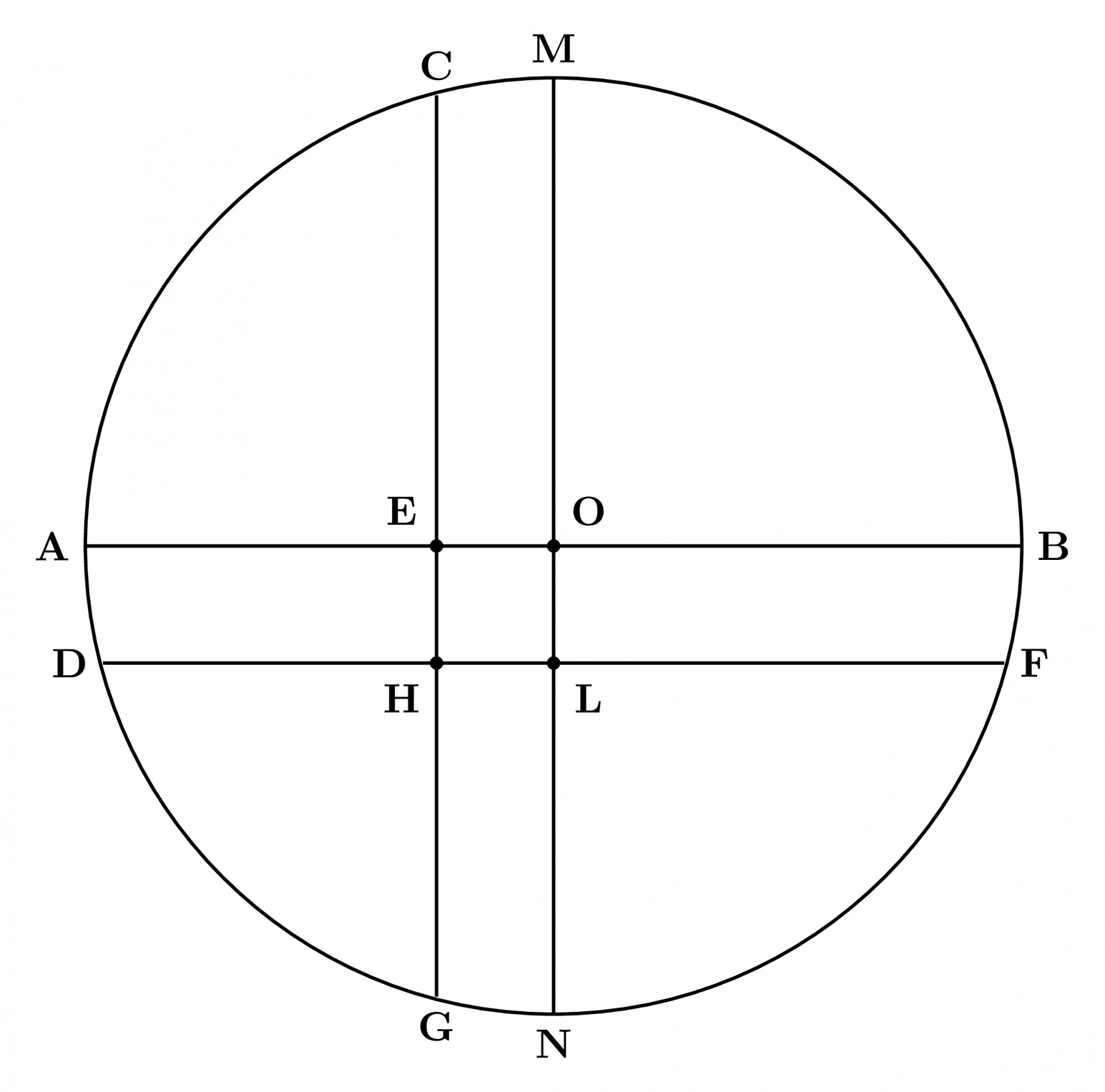In the following figure, the diameter of the circle is $3$ cm. $\text{AB}$ and $\text{MN}$ are two diameters such that $\text{MN}$ is perpendicular to $\text{AB.}$ In addition, $\text{CG}$ is perpendicular to $\text{AB}$ such that $\text{AE : EB} = 1 : 2,$ and $\text{DF}$ is perpendicular to $\text{MN}$ such that $\text{NL : LM} = 1:2.$ The length of $\text{DH}$ in cm is

- $2\sqrt{2} -1$
- $((2\sqrt{2} -1 ))/2$
- $((3\sqrt{2} -1 ))/2$
- $((2\sqrt{2} -1 ))/3$